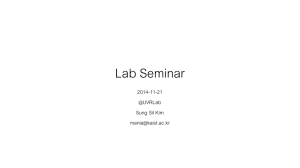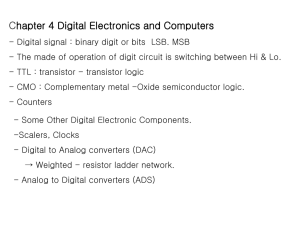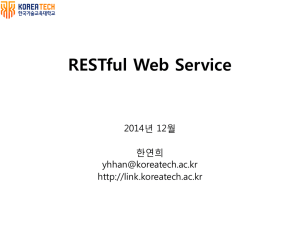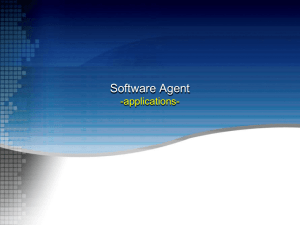Agent1
advertisement
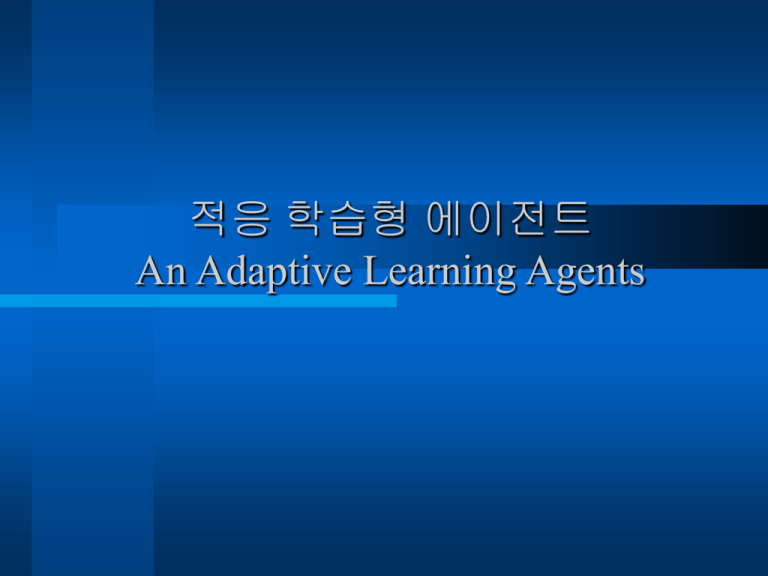
적응 학습형 에이전트 An Adaptive Learning Agents 목차 에이전트 에이전트의 속성 에이전트 분류 에이전트 학습기법 사례 연구 Agents 란 무엇인가 ? “Intelligent agents continuously perform three functions: perception of dynamic conditions in the environment; action to affect conditions in the environment; and reasoning to interpret perceptions, solve problems, draw inferences, and determine actions” [Hayes-Roth, 1995]. “An autonomous agent is a system situated within and a part of an environment that senses that environment and acts on it, over time, in pursuit of its own agenda and so as to effect what it senses in the future” [Franklin and Graesser, 1995]. “A hardware or (more usually) software-based computer system that enjoys the following properties: autonomy, social ability, reactivity, pro-activeness” [Wooldridge and Jennings, 1995]. “Autonomous agents are computational systems that inhabit some complex dynamic environment, sense and act autonomously in this environment, and by doing so realize a set of goals or tasks for which they are designed” [Maes, 1995]. “Intelligent agents are software entities that carry out some set of operations on behalf of a user or another program with some degree of independence or autonomy, and in so doing, employ some knowledge or representation of the user’s goals or desires” [IBM, tech. report.]. 소프트웨어 에이전트란 하드웨어 에이전트인 로봇 과는 대별되는 인간의 대리인 개념으로 사용자의 행동양식을 관찰하고 학습하여 Information Space에 서 사용자를 대표하고 학습된 사용자의 행동양식 을 기반으로 사용자가 해야 할 작업을 자동으로 수 행하는 소프트웨어이다. [Direct Manipulation] [Indirect Manipulation] Agent의 속성 Reactivity Autonomy Collaborative behavior Communication ability Inferential capability Temporal continuity Personality Mobility Adaptivity Learnability [Gilbert et al., 1995] [Nwana, 1996] [Franklin and Graesser, 1996] Agents 의 분류 [Caglayan and Harrison, 1997] 학습 에이전트 “Agents that change its behavior based on its previous experience.” 대표적인 학습 기법 Reinforcement Learning Decision Trees Bayesian Learning Neural Networks Genetic Algorithms 사례 연구 (1/4) NewsHound (http://www.newshound.com/) NewsHound의 Hounds (agents) 는 동적인 Information sources (Web, Usenet News, etc.)를 감시하여 학습한 사용자의 preference와 관련 있는 정보를 filtering한 다. Information Filtering, User profiles learning, Bayesian classifier FireFly (http://www.firefly.com/home) 군집적 학습(collaborative learning)방법을 이용하여 일상 생활에서의 각 사용자의 정보 요구를 충족시 켜 주는 형태 collaborative (social) filtering, clustering 사례 연구 (2/4) WBI (Web Intermediaries, Webby http://www.almaden.ibm.com/cs/wbi/) Web 정보의 실 수요자와 제공자 사이에 존재하는 agents로 개인화(Personalized)된 정보를 위한 지능형 보조자(Intelligent Assistant)역할 수행 Brokering, Information filtering BargainFinder (http://bf.cstar.ac.com/) 사용자가 제시한 정보 요구에 가장 적합한 정보를 찾아 주는 검색 에이전트 예) 특정 가수의 CD에 대한 가장 낮은 가격 제시 사례 연구 (3/4) MySimon (http://www.mysimon.com/index.anml) VLA (Virtual Learning Agents)를 이용하여 사용자가 원하는 정보에 가장 적합한 정보를 제시 Web Information Retrieval, User preference learning Intruder Alert (http://www.oga.co.th/syncom/axent/product/ita/it a.htm) 특정 조직의 허가된 사용자들의 접근 형태 분석을 통한 잠재 침입자의 침입 형태를 파악, 근절 Intrusion detection systems, neural networks, 사례 연구 (4/4) eWatch (http://www.ewatch.com/) DSS (Decision Support System)의 일종으로 특정 회사 의 기업 이미지나 평판 등을 Web이나 Usenet등에서 수집하여 분석 Data mining IntelligentMiner (http://www.software.ibm.com/data/iminer/fortext/) 에이전트 시스템으로 보기는 어렵지만 에이전트의 학습 능력을 이용하여 대용량의 데이터를 분석하는 도구 Data mining
